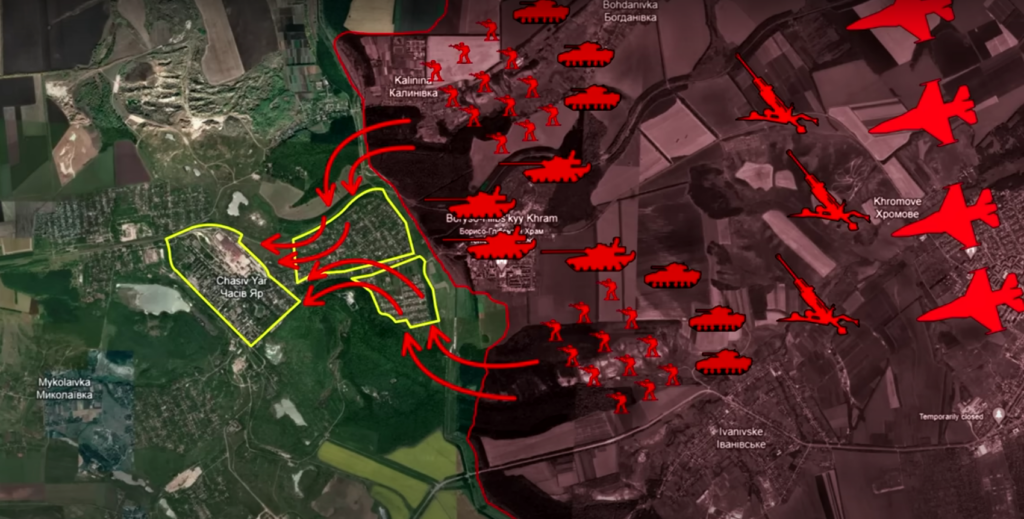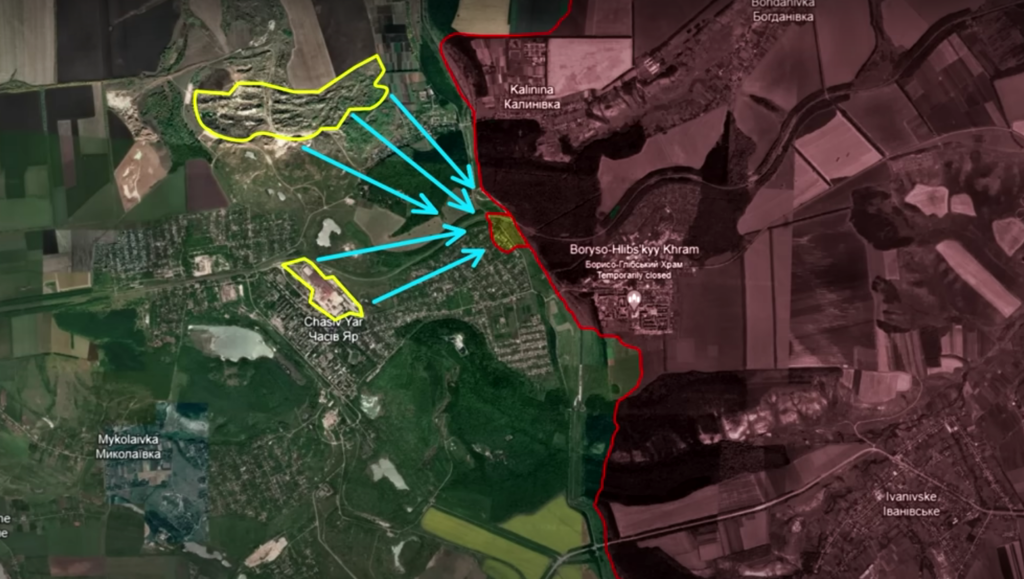10 August. Today’s Frontline Report focuses on the Bakhmut direction, where Russian forces are attempting to capture the Ukrainian stronghold of Chasiv Yar in Donetsk Oblast.

Russian forces launched a massive wave of attacks on Chasiv Yar’s northern flank, aiming to cross a canal and establish a critical bridgehead. Their primary objective was the Novyi and Zhovtnevyi districts, intending to facilitate westward advances towards the town center.

The Russian strategy involved accumulating forces in the Orlova forest north of Zhovtnevyi district. Troops crossed the canal at night via a bridge and makeshift crossings, hiding in the forest during the day. Ukrainian forces struggled to counter these movements due to intense Russian electronic warfare disrupting drone operations.

The assault tactic involved sending BMPs (infantry fighting vehicles) loaded with troops across the canal. In one instance captured on video by Ukrainian fighters, a Russian BMP-3 crossed under heavy Ukrainian artillery fire, using its 30mm autocannon for cover. It managed to unload eight soldiers before being struck by an FPV drone, leaving the infantry isolated and subsequently destroyed.

Russian command repeated these high-casualty assaults to establish a bridgehead. The deployment of BMP-3s, Russia’s most well-protected IFVs, underscored the importance of this battlefield section. These attacks forced a slight Ukrainian withdrawal, creating an artillery and FPV pocket.
However, Russian assaults towards Chasiv Yar’s center were disrupted by Ukrainian firing positions at a refractory plant and a northern coal mine. The elevated coal mine position provided Ukrainian forces with effective mortar and grenade launcher placements.

The Russian survival rate during these operations was low, with only three to four survivors from each eight-man squad typically remaining. Ukrainian fighters reported continuous waves of attacks, with less than 60 minutes between each assault. This tactic allowed for a gradual accumulation of surviving Russian troops to expand the bridgehead.
The intensity of the Russian assault eventually decreased as they depleted their reserves of troops and equipment. This lull allowed Ukrainian forces to locate and neutralize the isolated Russian survivors.
Despite the high casualty rate and limited gains, these operations demonstrate the strategic importance of Chasiv Yar and the lengths to which Russian forces are willing to go to secure a foothold in the area.
In our regular frontline report, we pair up with the military blogger Reporting from Ukraine to keep you informed about what is happening on the battlefield in the Russo-Ukrainian war.






